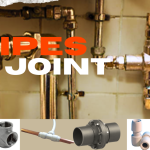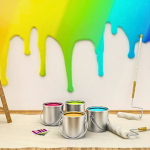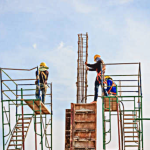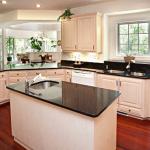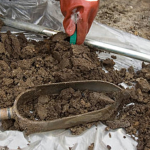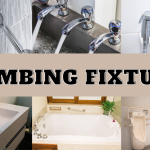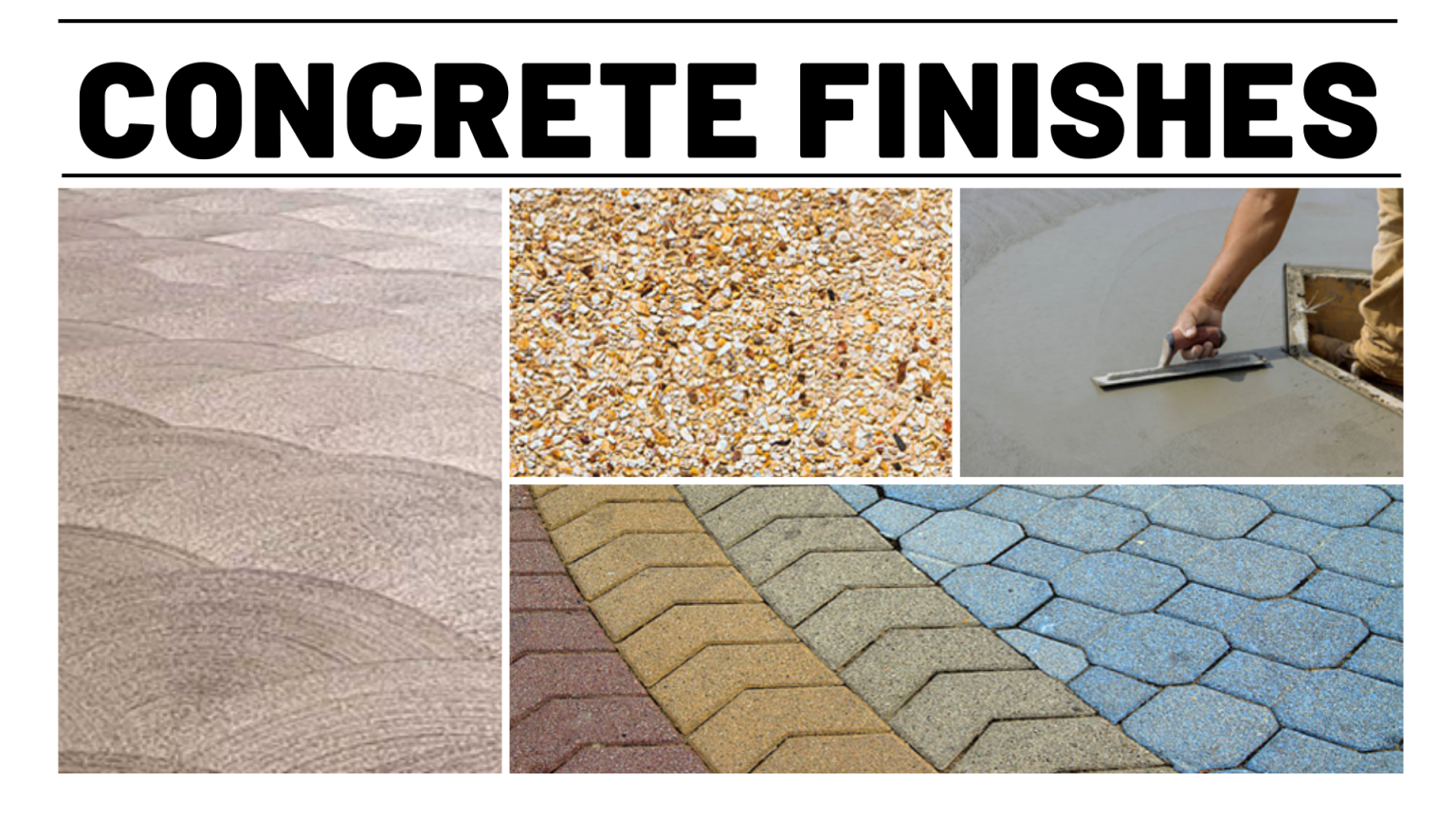
The most basic types of concrete finishes are smooth surfaces formed with screeds and trowels. Concrete finishing work screed is applied to the surface of the concrete immediately when it has been laid in form.
In order to remove excess concrete and fill in cracks, screeds—typically made of long pieces of metal or wood—are frequently pulled and pushed across the concrete surface.
Concrete is the most widely building material used in all kinds of construction projects around the world. Concrete in its wet state can be molded into any shape, size, and finish using a variety of finishing techniques and equipment to create a beautiful, long-lasting surface with a high aesthetic appeal.
Different Types of Concrete Finishes
A freshly laid concrete surface can have a variety of finishes put on it. Each type of finish has a different purpose and is appropriate for a different location.
- Troweled finish
- Broom finish
- Exposed aggregate finished
- Salt finish
- Stamped concrete finish
- Swirl finish
- Colored Concrete Finish
- Polished Concrete Finish
1. Troweled Finish
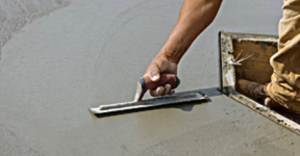
The trowel finish is among the most common and widely used concrete finishes for most applications. The trowel is used to smooth and fine-level the concrete’s surface after it has been laid in the formwork and is leveled.
Trowels come in both manual and mechanical varieties. In a manual trowel, the concrete surface is traversed by pushing and pulling on a flat steel blade with an attached handle.
For large commercial projects, a mechanized trowel is used, resembling a large fan with the blades resting directly against the concrete.
2. Broom Finish
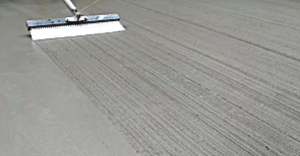
A concrete surface that has been broom finished has a rough texture. The surface of the concrete has been prepared with a trowel-finished surface.
After the concrete surface has been prepared, it is given a rough texture by dragging a broom across it. The surface’s rough texture gives it transaction and prevents slipping.
Broom finishes are ideal for parking lots and driveways, as well as areas where there is a risk of slippage due to the presence of water or moist conditions.
3. Stamped Concrete Finish
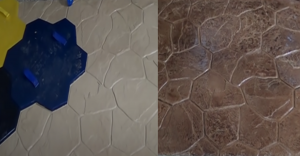
It is a type of concrete surface that is mostly used for decorative and aesthetic purposes. The concrete surface can be provided with texture and design using the stamping technique.
Using panels with designs that are adhered to the concrete surface, the designs and textures are created. The concrete surface bears the design of the panel. There are many different designs of concrete stamps, such as bricks, stones, and many others. Colors are sometimes added to make them more appealing and decorative.
The stamped concrete finish is a very clever and creative development in concrete that is frequently used for patio floors, car porches, driveways, and sidewalks.
4. Salt Finish
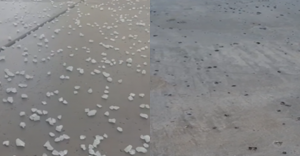
The salt finished concrete surface is achieved by rolling coarse rock salt crystals onto the freshly placed concrete surface and then washing it off with a stream of water after the concrete has set.
This coating gives plain or colored concrete a decorative, subtle, rough texture and skid resistance. Pools and other wet areas are where it is most frequently used.
5. Exposed Aggregate Finish
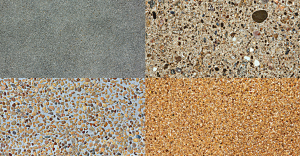
The concrete surface is prepared for the exposed aggregates finish in a way that makes the aggregates visible. This finish allows the aggregate to show through by washing away the top layer of cement.
For this kind of concrete finish, a variety of aggregates, such as attractive stones, seashells, colored glass, granite, etc., can be used.
The concrete is poured and leveled in order to achieve this finish and troweled as usual. The surface of the cement is then treated overnight with a chemical that slows the hardening process. After that, the top surface is washed, revealing the surface aggregates.
The primary purpose of providing an exposed aggregate surface is to make it appealing. In addition to providing a secure, non-slip surface, it is aesthetically pleasing. It is highly recommended for porches and sidewalks.
6. Swirl Finish
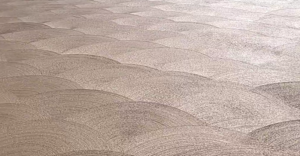
A swirl finish is a unique type of concrete finish created by smearing the surface of the concrete in a uniformly overlapping circular pattern.
When compared to a smooth surface finish, it gives the concrete surface an aesthetically pleasing appearance and is preferred for outdoor applications because it makes the surface more beautiful while also making it safer to walk on and stand on, especially during the wet season.
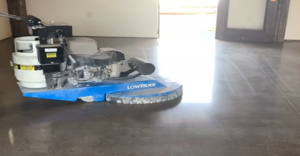
The polished finish on a concrete surface is achieved through a mechanical process of grinding and polishing with the aid of a penetrant chemical to provide varying textures using specialized tools and equipment. The polished surface is provided for added protection, simple cleaning, and attractive looks.
8. Colored Concrete Finish
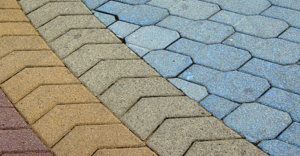
To achieve a pleasing appearance that complements the surroundings, the colored finish of the concrete is achieved through mix-added pigments or post-cure staining.
A colored finish on a concrete surface can be achieved using either pigment or strains. By mixing the pigments directly into the concrete mixture before pouring, colored concrete can be created.
To obtain strained colored concrete, apply stains to concrete of any age to achieve a more vibrant colored finish. To protect the surface, the stain is usually followed by the installation of a seal over the concrete.
Other Finishes
The following is a list of the other concrete finishes:
- Color chips Finish
- Dyed Finish
- Engraved Finish
- Etched Finish
- Flashed Finish
- Marbleized Finish
- Micro Topping or Over Lay Finish
- Sand Blasted Finish
Benefits of Concrete Finishes
There are many advantages to concrete finishes, making them a great option for one’s needs. The following are some advantages of concrete finishes:
- Durability: Concrete finishes that are properly constructed outlast other types of finishes.
- Stiffness: Concrete finishes are excellent structural elements that can withstand imposed loads. They do not deflect when subjected to applied loads, avoiding deformation issues.
- Energy efficiency: Concrete finishes have a high thermal mass. As a result, the internal environment is improved and less energy is needed for thermal comfort.
- Construction speed: It takes little time and effort to build concrete finishes.
- Water resistance: Because concrete finishes are nonabsorbent, they are water resistant.
- Maintenance Expenses: Concrete finishes on surfaces make them easy to maintain, significantly lowering maintenance costs.
- High fire resistance: Because concrete is incombustible, concrete surfaces can withstand fires with ease when finished with concrete.
Post navigation

